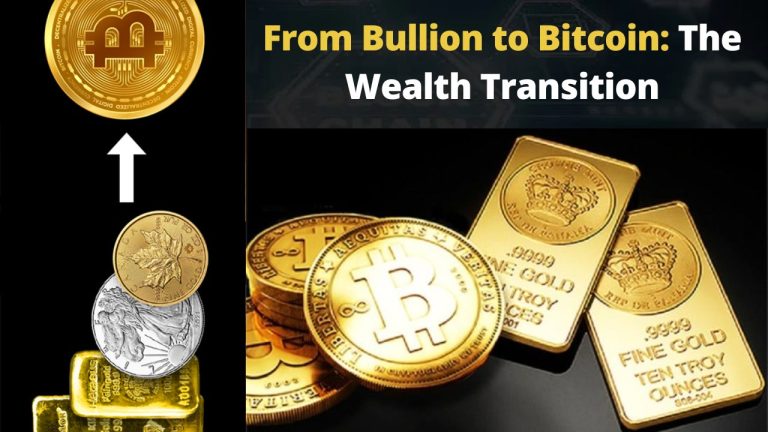"Advertisement"
From Bullion to Bitcoin: The Wealth Transition
Throughout human history, the concept of wealth and its storage has evolved in response to technological, economic, and societal changes.
From shells and salt to precious metals and now digital currencies, the mediums by which we quantify and store value have been in constant flux.
This article takes a journey through time, tracing the path of value storage from bullion to Bitcoin.
See why traders worldwide are choosing our platform as their ultimate trading solution visit Immediate Alpha now.
The Age of Bullion: Gold as the Gold Standard
Gold, with its lustrous yellow hue, has captivated human imagination for millennia. Ancient civilizations, from the Egyptians to the Romans, revered gold not just for its beauty but also for its utility as a medium of exchange and store of value.
For several centuries, gold served as the backbone of global economies. Its inherent properties—durability, divisibility, portability, and scarcity—made it an ideal choice.
Countries stored gold in vast vaults, and their currencies were often pegged to a specific amount of this precious metal, a system known as the gold standard.
The Shift from Metal to Paper
As economies expanded and global trade flourished, the limitations of a purely gold-backed system became apparent. Transporting gold was risky and cumbersome.
Thus, paper currency, representing a claim to a certain amount of gold, emerged as a more practical alternative.
Initially, these paper notes were directly exchangeable for gold. However, over time, the link between paper currency and gold weakened.
By the mid-20th century, most nations had abandoned the gold standard in favor of fiat currencies—money declared by a government to be legal tender but not backed by a physical commodity.
The trust in the government and its monetary policy became the new foundation for these currencies.
In contrast to gold-backed currency which was tied to physical gold reserves and directly exchangeable for gold, fiat currency is not backed by a physical commodity, and its value is largely based on trust in the issuing government.
The Digital Revolution: Birth of Electronic Money
The latter half of the 20th century witnessed a seismic shift in the way transactions were conducted, thanks to technological advancements.
With the rise of the internet and computers, money began its next phase of evolution—entering the age of electronic money.
Credit cards, online banking, and digital transactions reduced the need for physical cash. It became possible to buy goods from another continent with just a click.
However, this digital financial system was still anchored to traditional banks and government regulations.
Bitcoin: The Digital Gold
In 2008, an anonymous figure, Satoshi Nakamoto, introduced Bitcoin—a decentralized digital currency that operates without a central authority. Bitcoin draws several parallels with gold:
- Scarcity: Just as there’s a finite amount of gold on Earth, there will only ever be 21 million Bitcoins.
- Divisibility: Both gold and Bitcoin can be divided into smaller units.
- Decentralization: While gold is mined from the Earth, Bitcoin is ‘mined’ using computational power in a decentralized network.
Bitcoin, often dubbed “digital gold,” offers a promise of financial sovereignty, free from government manipulation.
Challenges and Criticisms of Cryptocurrencies
Despite its potential, the cryptocurrency world is not without challenges:
- Volatility: Cryptocurrencies are notoriously volatile. Price swings of 10-20% in a single day are not uncommon.
- Environmental concerns: Bitcoin mining consumes vast amounts of energy, leading to concerns about its environmental impact.
- Regulatory and security issues: Cryptocurrencies operate in a legal gray area in many countries, leading to potential crackdowns. Additionally, the digital nature of these assets makes them targets for hacks and fraud.
The Broader Cryptocurrency Ecosystem
Bitcoin may be the poster child of the crypto revolution, but it’s just the tip of the iceberg. The cryptocurrency space is vast, with over 10,000 different digital assets as of 2022.
Ethereum introduced the concept of smart contracts, while tokens like Cardano and Polkadot promise more scalable blockchain solutions.
Furthermore, the rise of Decentralized Finance (DeFi) and Non-Fungible Tokens (NFTs) showcase the versatility of blockchain technology beyond mere currencies.
Conclusion: The Future of Wealth Storage
From tangible bullion to intangible bits and bytes, the journey of wealth storage has been fascinating. As we stand on the cusp of what might be a new era in finance are becoming more prominent.
The only certainty is change. Whether cryptocurrencies will become the predominant form of wealth storage or simply coexist with traditional forms remains to be seen.
However, understanding and adapting to these shifts is crucial in this rapidly evolving landscape.
"Advertisement"
